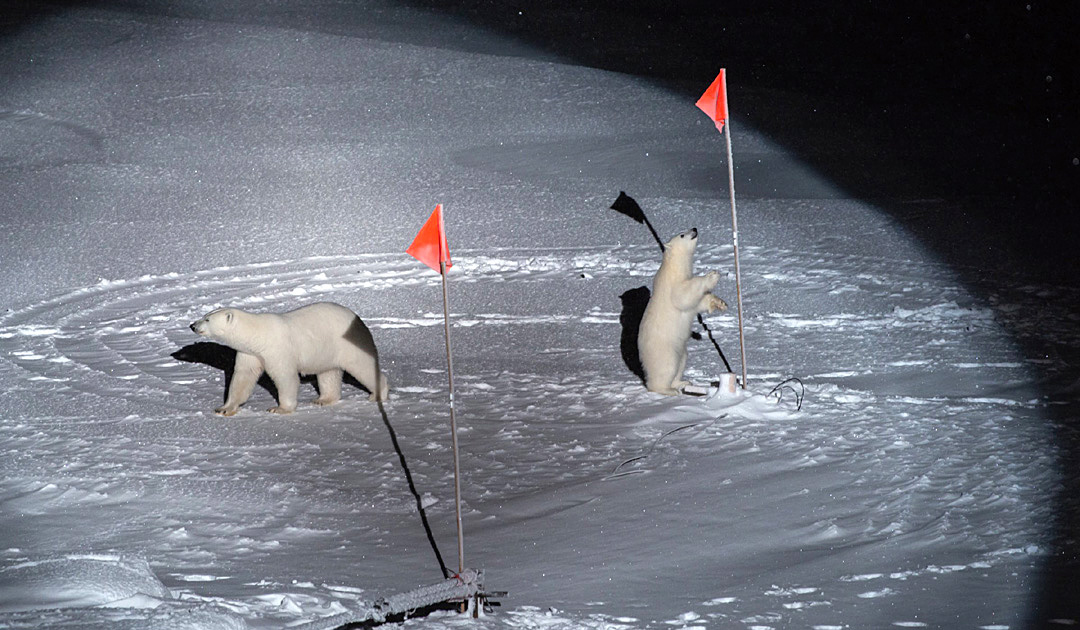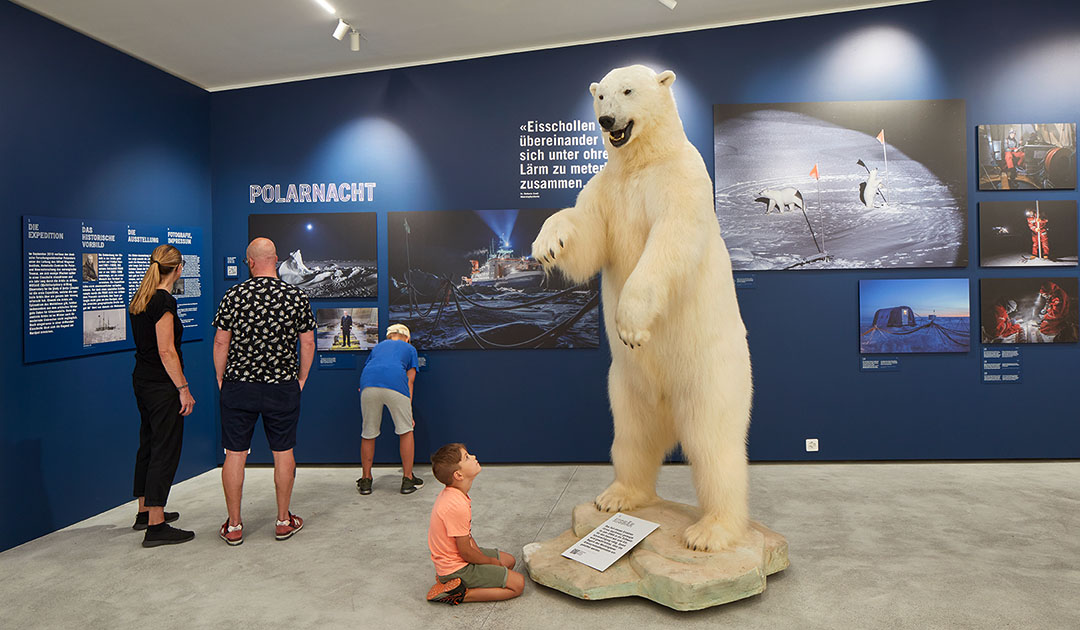
The Alfred Wegener Institute’s year-long MOSAiC expedition was likely the largest research expedition of our time and continues to inspire young and old alike nearly two years after its return in October 2020. Starting today, June 21, an exhibition at the Glacier Garden Lucerne in Switzerland will provide fascinating insights into the researchers’ work during the expedition, their daily life in permanent darkness or daylight, show the unique and extreme nature and convey to visitors the importance of the Arctic for the rest of our planet.
After a period of renovation, the Glacier Garden Lucerne opens the newly built sandstone pavilion today with a special exhibition about the Arctic expedition. The exhibition, co-produced with the Alfred Wegener Institute, takes visitors into the icy world where the researchers and crew members of the German research icebreaker Polarstern lived and worked for months.
The impressive photographs by Esther Horvath, photographer and photo editor at AWI, Fellow of the International League of Conservation Photographers, and winner of the 2020 World Press Photo Award, and Lianna Nixon, photographer and filmmaker, as well as exhibits “bear witness to the challenges faced by nature and humans in the incredibly hostile environment of the Arctic,” says Andreas Burri, director of the Glacier Garden.

Thanks to the large-format images, the accompanying information and the film footage from the expedition, the audience gets an insight into the various research activities on the ice and into the everyday life of the expedition members during polar night and polar day.
The exhibition, which appeals equally to all audiences, will be further enriched by guided tours in June, July and August and by a lecture on Arctic landscapes and an excursion to Griess Lake in September.
The newly built sandstone pavilion in the Glacier Garden serves as the exhibition venue. Architecturally, the pavilion appears as a protuberance of the rock and, without frills, is intended to provide the eye with a restful moment in transition to the lushly growing garden. Lucerne sandstone was used for the construction. The two rooms of the pavilion offer space for special exhibitions and film screenings.
Julia Hager, PolarJournal
Link to the Glacier Garden Lucerne: https://gletschergarten.ch
More on the subject:





